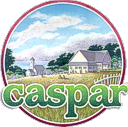Project Description
The main objectives of this project will be to a) remove non-native, invasive trees from Caspar Headlands State Natural Reserve, and to b) re-vegetate selected areas with appropriate native tree and shrub species. The project will foster environmental stewardship at Caspar Headlands SNR through the combined efforts of State Parks, the Caspar Community, and other State and local agencies.
This park unit is currently infested with several species of highly invasive non-native plants, including Monterey cypress (Cupressus macrocarpa), Tasmanian bluegum (Eucalyptus globulus), and Monterey pine (Pinus radiata). Removal of these plants is consistent with State Parks vegetation management directives in DOM Chapter 0300.
No populations of sensitive species are known to occur where the invasive species are targeted for removal.
The Mendocino District natural resources program proposes to work with local residents to facilitate the removal of invasive plants through increased cooperation and coordination. Several local residents, already registered with the District as volunteers and trained in the use of chainsaws, have volunteered to work on invasive plant removals. State Parks has also received a request from the California Department of Forestry and Fire Protection (CALFIRE) to assist in that agency's power saw training program by providing trees to cut, in this case specifically, Monterey cypress, Monterey pine, or bluegum eucalyptus. Along with labor provided by District natural resources staff, these personnel resources are available to perform the necessary work.
Funding for State Parks staff time and equipment, along with volunteer management and coordination with CALFIRE, would be provided from the natural resources maintenance budget, annually, as available. The contributions of low-cost CALFIRE labor and volunteer participation would result in a great net benefit to State Parks for its natural resources management program, as well as in promoting good relations with the Caspar Community, the Caspar and Mendocino County Fire-Safe Councils, and the Mendocino Coast Cooperative Weed Management Area.
CALFIRE will assume responsibility for brush piling, bucking, and other tasks associated with cleaning up trees that they fall. Piles of brush will be located near the removal sites for later burning. Burning would require a burn permit, or a smoke management plan and air quality clearance from the County Air Quality Division.
Bluegum eucalyptus trees typically re-sprout vigorously from stumps and adjacent roots, so measures will be taken to reduce regrowth. While herbicide applications are effective, an alternative treatment will be used that is favored by the local community and consistent with State Park's commitment to integrated pest management. The treatment will be to de-bark stumps, then tarp with black plastic for a period of one year. The effectiveness of this treatment in eliminating sprouting will be evaluated by State Park Environmental Scientists, with monitoring assistance and maintenance provided by community volunteers.
In addition, volunteers will be trained by State Park natural resource staff to remove other invasive weeds. State Parks supervision will be required and District protocols will be followed when volunteers use chainsaws or other power tools.
This proposal will also initiate native plant restoration at the Caspar Headlands, through the propagation and planting of native trees and shrubs (e.g., shore pine, wax myrtle, silktassel) to replace removed invasive trees. Volunteers will assist State Park natural resource staff with the collection of native propagules (seed and cuttings) and grow the plants in containers at the Caspar Community Garden and Jughandle Creek Farm greenhouses. Under the direction of State Park Environmental Scientists, volunteers and park staff will plant the natives in appropriate locations on the Caspar Headlands. The newly revegetated areas will be maintained with the assistance of community volunteers.
Responses to this document may be sent to Angela Martin, email AMMARTIN (at) parks.ca.gov -- substitute the cute little @ symbol. This link is cloaked for spam protection.
For more about Caspar's Headland Maintenance efforts,
click here
for information about the Eucalyptus Firewood,
click here
| 
